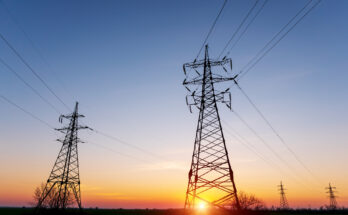With a percentage of renewable energy in final energy consumption of 22.1% in 2020, the European Union (EU) will have surpassed the 2009 objective of 20%. There are multiple realities depending on whatever nation you live in, and this is one of them.
Biomass, geothermal energy, hydropower, solar energy, and wind energy are all examples of renewable sources. The EU’s final energy consumption has more than doubled since 2004 (9.6 percent), yet the EU’s energy mix is dominated by oil and gas, with a minor portion of the EU’s energy coming from renewable sources.
2020: Europe’s primary energy source
Renewable energy has overtaken fossil fuels for the first time in Europe. Ember, a British think group, predicts that by 2020, 38 percent of the EU’s power would come from renewable sources. This is an increase of 1% above the current 37% share of energy provided by fossil fuels.
Results were promising, however there are significant regional differences. In addition, wind power is the most widely utilized renewable type of energy (14.4 percent). Hydropower comes in second with 12.7% of the market share, while solar energy barely contributes for 5.2%. However, in the next years, the energy environment may shift. From 9% to 15% in a year, Ember’s data shows a rise in solar energy use. If photovoltaic self-consumption is to blame for solar energy’s recent rise, so be it. Solar panels are becoming more popular as a means for homeowners to generate their own power. Consumers are increasingly drawn to this technology because it makes it easier for them to participate in the energy transition and lower their utility costs. Energy expenses may be cut by 30% on average when people transition to self-consumption, as stated by green energy provider, ekWateur.
In 2020, Sweden was the EU’s most advanced nation in terms of renewable energy production, generating 68% of its total final consumption from these sources. Consequently, it has exceeded the countries of Finland (43.8%), Latvia (42.1%), and Austria (36.5 percent). The countries with the lowest percentages of gross final energy consumption derived from renewable sources were Malta (10.7%), Luxembourg (11.7%), and Belgium (13%) in the same year. Three countries, Slovenia (25%), the Netherlands (14%), and Belgium, have all met or surpassed their goals (13 percent). Just France has fallen short of its goal, using only 19.1% renewable energy in its mix.
Many of these discrepancies may be traced back to the divergent political goals pursued by the different nations. The use of high carbon taxes or public expenditures to stimulate the use of renewable energy sources is one example of a stimulus program implemented by several European governments.
Solar power, the fastest-growing source of energy
About two-thirds of the renewable energy generated in Europe will come from wind and hydropower, respectively (36% and 33% of the total). However, solar power is the fastest-growing source of energy. In 2008, it accounted for only 1% of the world’s total energy consumption, but by 2012, it had risen to 14%, accounting for 144.2 TWh. In 2020, on average, 23% of heat and cold production came from renewable energy.
Fit for 55
Ursula von der Leyen, the next head of the European Commission, unveiled a climate action plan after the 2019 European election results were announced. It features a number of new policies that aim to achieve EU-wide carbon neutrality by 2050. By 2025, the European Commission hopes to have achieved this goal by putting out the ‘Fit for 55’ package of measures, which among other things calls for a 40 percent increase in Europe’s energy contribution from its current 32 percent to 40 percent by 2030.
Additionally, the new values for the following decade were established in the 2030 target climate plan as well as updated in the Green Deal. Climate change emissions are expected to have decreased by 55 percent since 1990.
Wind Power
Wind energy is a variable, not a constant, energy source. It is dependent on the weather to provide power. During the times when wind energy isn’t available, it has to be produced or stored somewhere. Toward the end of 2020, wind energy will account for 5.9% of the world’s total output. China will account for 29.6% of global production in 2020, followed by the United States (21.5%) and Germany (21.5%). (8.2 percent).
Last year, the International Renewable Energy Agency (IRENA) released its yearly data, showing that renewable energy capacity was constructed at a 50% quicker rate than in 2020. Renewable energy sources account for almost 80% of the new electrical capacity built in the last year. 91 percent of these additional capacity are accounted for by solar and wind energy.
The decline in net fossil fuel-based power production capacity in Europe, North America, and Eurasia is partly responsible for the relative gain in renewable sources (Armenia, Azerbaijan, Georgia, Russian Federation, and Turkey). New fossil fuel capacity was developed in 2020 at a lower rate than in the previous year, which indicates that fossil fuel growth is continuing to slow down.





